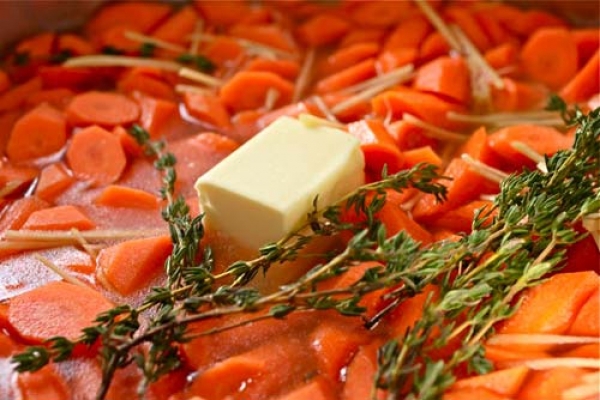WEST BRATTLEBORO — Recently, I held my first culinary class, which featured herbs: parsley, sage, rosemary, and thyme. Oh, and sorrel.
Food is medicine, and cooking with herbs improves health and reduces disease symptoms. We explored each herb's healing benefits: Parsley purifies the blood, sage invigorates and strengths the system, rosemary stimulates and clarifies the mind, thyme cleanses and tones the respiratory system, and sorrel provides a nutritious source of minerals and enzymes.
These herbs all grow vigorously in our New England climate. They love cool air, partial shade, and short summers, and can tolerate wet or dry conditions. In other words, they are perfect for our neck of the woods.
* * *
Sorrel and thyme are perennials. Parsley, sage, and rosemary transfer indoors easily and can be replanted outside in the spring.
What a treat to have fresh herbs throughout the fall and fresh lettuce around the holidays! Some people might have greenhouses for their winter salad fixes, but we have not yet set one up. Until then, the aquaponics systems fill our green leafy and herbal needs.
All these plants also do well in an aquaponics system. My husband Mark keeps a few tanks going year-round, but in the fall, the tanks are especially handy.
You might remember “Hooked on aquaponics” in the March 13, 2013 issue of this newspaper. For more information on home aquaponics systems, see Mark's blog, Brattleponics.
* * *
My next culinary class, Foliage Season, was designed to honor autumn's roots and tubers: maple-glazed carrots, scalloped potatoes gratin, mashed Gilfeather turnips, roasted roots with rosemary and sage, and Vermont succotash, a sweet-and-sour cabbage dish made with bacon and apple cider.
For those who couldn't make it, here is my favorite way to prepare carrots.
I learned this method from my French mentor, Chef Pierre Latuberne, formerly of Café du Parc in Florida. Chef Pierre owned a small, classical restaurant and ran his kitchen with just one sous chef - one year about 30 years ago - that person was me.
Chef Pierre's recipes are simple and excellent. To this day, I make these carrots the same way; they are that good.
You will notice that recipe-free cooking typically offers ratios versus amounts, as a dish varies depending on how much you'd like to make. Living in Vermont, I modified the recipe to include maple syrup instead of white sugar. (Hey, when in Rome....)
Maple-glazed carrots
Slice or cut into bite-size pieces, then fill a pan with:
¶Carrots: organic, with skins on
The shape doesn't matter: circles, sticks, whatever shape you want to cut them.
Add:
¶Butter, a few chunks
Swirl onto the carrots:
¶Maple syrup
How much? Depends on how sweet you want them.
Add:
¶Thyme sprigs, fresh
¶Salt and pepper
If you want, you can add:
¶Ginger
¶Cinnamon stick
¶A squirt of lemon
Fill the pan up to the carrot line with:
¶Water
Bring carrots to a boil, then reduce heat to a rolling simmer.
When the water is cooked out, the carrots will be done, and the glaze is made. Stir the carrots into the glazed mixture.
Remove the thyme stems.
Add a bit more butter, if you want.
* * *
At the end of the class, we dine together, enjoying the fruits of our labors and leftovers.
If recipe-free cooking seems too loose or confusing, don't worry. Cooking isn't all science and specifics; a big part is art and play - and love.
The holiday season brings enough stress; let's have some fun in our kitchens.
